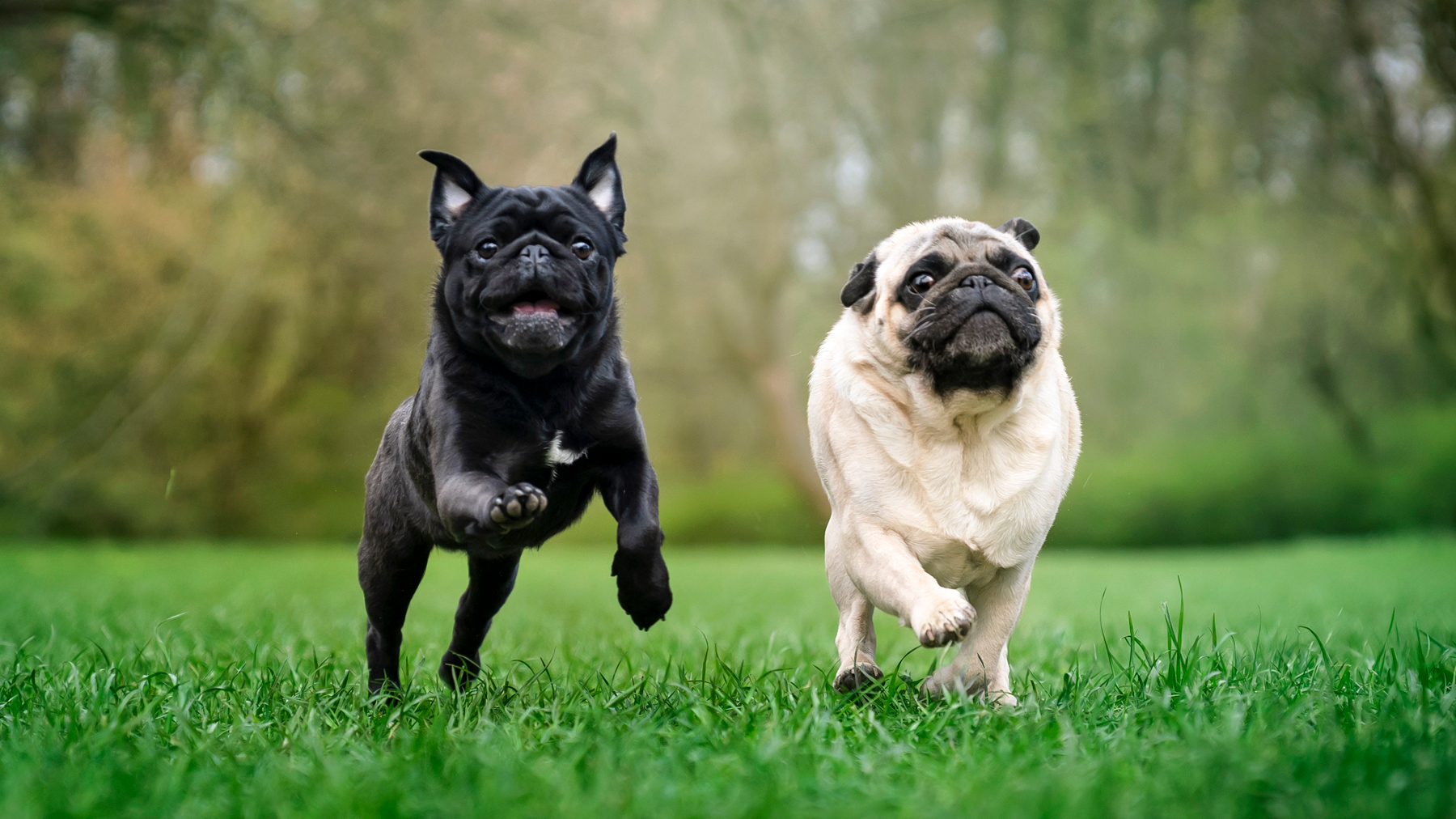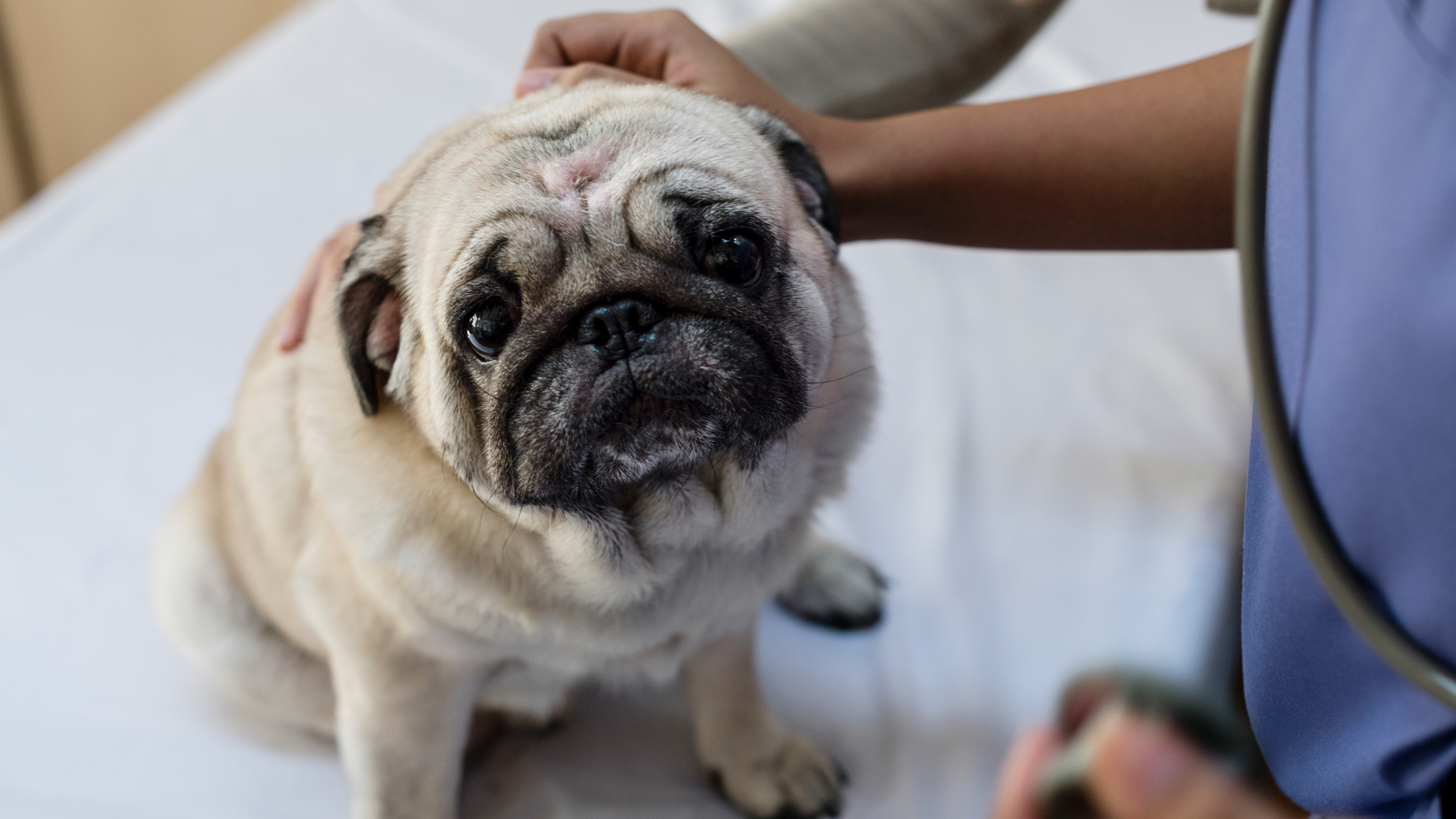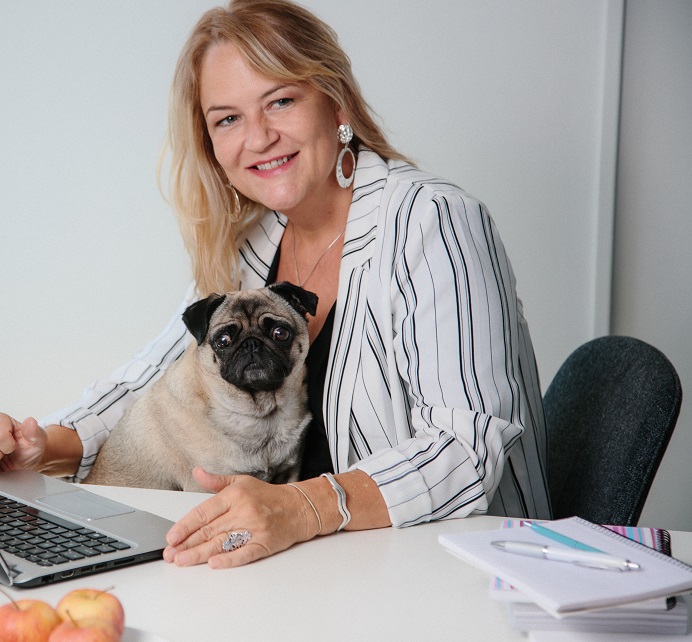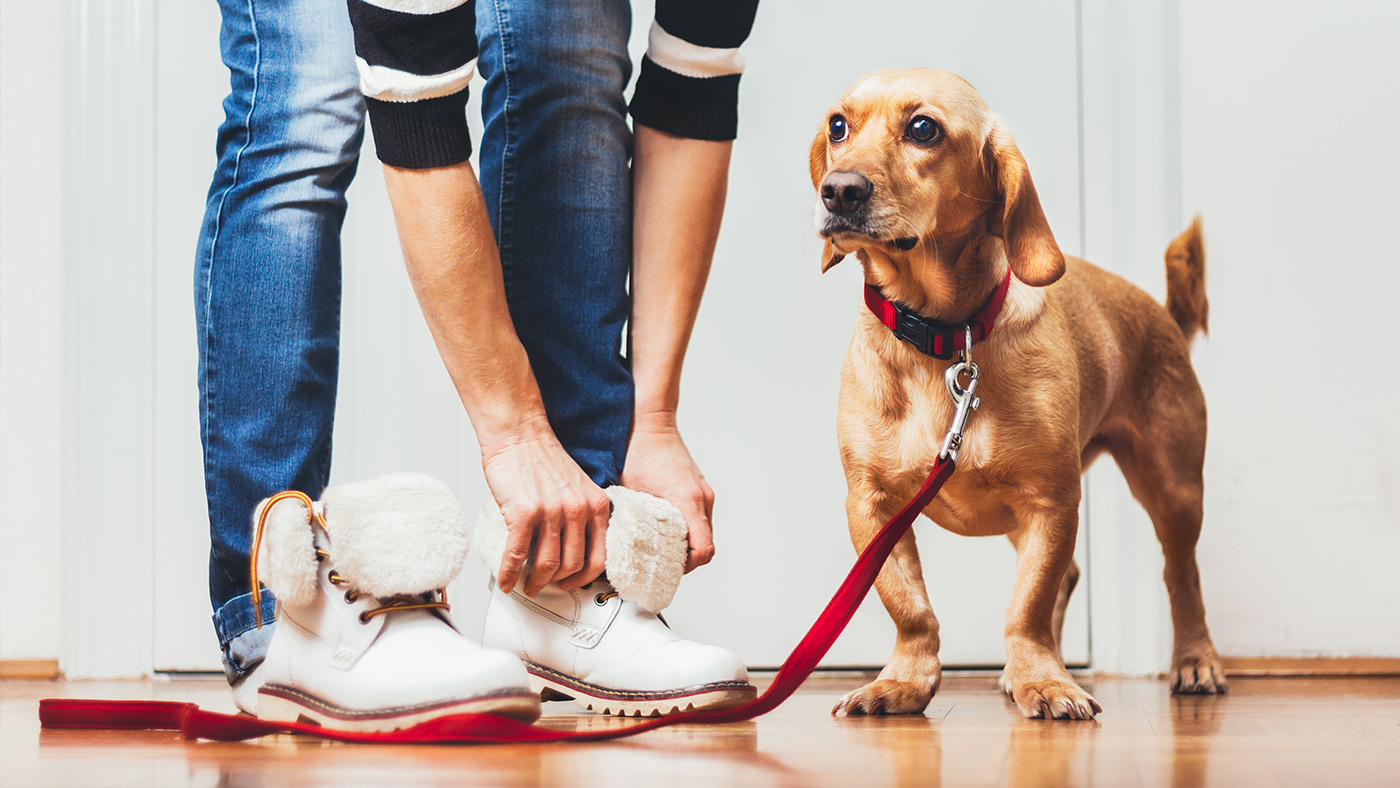I've owned and worked with pugs for over a decade — here's six things you need to know about the breed
Whilst being Insta-cute and the most loyal of companions, there are health issues with pugs to be aware of

Pugs were ushered into my home unexpectedly. My daughter and I wanted a dog; my boyfriend was nervous, having been bitten as a child. I thought we’d hit an impasse until one day, he came home and announced we should have a chihuahua.
Aside from the fact that I couldn’t picture my hairy, 6’3” man carting a chihuahua around, I wasn’t keen. I’m sure they have their charms, but to cut a long story short, we compromised on a pug.
We signed up with the Pug Dog Welfare and Rescue Association (PDWRA) and adopted Ruby. She was eight years old, missing an eye, and we all completely fell in love with her. She was gentle, comedic, and utterly adorable. So it was paralyzingly awful when we discovered, less than a year later, that she was riddled with cancer.
We did the right and proper thing, one of the most emotionally grueling mornings I’ve ever experienced. If you ever have to face saying goodbye to a pet, I hope you find some degree of comfort in reading these seven things nobody tells you when your pet dies.
Around two weeks later PDWRA called and explained that a pug had come in for rehoming and they felt she ought to come to us. I was dubious. It felt too soon. My daughter however had no reservations, and so… enter Alice.
Since then I’ve become something of an expert. I volunteer with PDWRA, and I’ve learned a lot about the breed. Hopefully, in sharing the biggest lessons I have learned, I will help to inform anyone thinking about getting a pet pug or anyone just curious about the adorable breed
Things you need to consider before getting a pug…
Brachycephalic breeds
Having a flat face means the dog’s skull is squashed, leading to numerous problems, particularly with breathing. The term is Brachycephalic Obstructive Airway Syndrome (BOAS), and you can expect a high chance of sleep apnea, regurgitation, low levels of oxygen, and overheating due to poor panting ability.
PetsRadar Newsletter
Get the best advice, tips and top tech for your beloved Pets
You could also face an elongated soft palate, causing further breathing issues, and narrow nostrils. If your pug can’t walk more than three minutes without panting, or they are noisy breathers, you need to check for BOAS. Many times it’s an operable condition. Tracheal hypoplasia (abnormally narrow windpipe) is rare but not unheard of in the pug, and will usually present when they are puppies, but this is more serious and will need medical intervention as soon as possible.
Aside from BOAS, there can be dental issues, and it’s very common for pugs to have extensive dental work. That gorgeous wrinkly face needs maintenance too, as infections can take hold in the face folds.
Pug eyes
Pugs’ eyes are generally pretty buggy, and they have deep corneas. They are prone to getting ulcers which, because there is no blood flow to the cornea, can be really hard to fix. If left, they can deteriorate extremely quickly. I’ve seen pugs develop an ulcer, and untreated it has ruptured within 48 hours and the pug has lost its eye. If your pug has an ulcer, get seen by a vet immediately.
Treatments include drops to soothe the cornea, plasma drops drawn from the pug’s own blood to enable healing, and – in extreme cases – a pedicle graft can be carried out. This takes a small piece of connective tissue from the corner of the eye and stitches it straight into the ulcer site, creating a flow of blood to the trauma. My Alice has been through this and we saved her eye, but it was a huge job!

Spines, knees, and bumpsadaisy
The curly piggy tail might be cute but it places huge pressure on a pug’s spine, and a condition called hemivertebrae is common in the breed. This means the spine can become fused or deformed, leading to mobility issues, and incontinence. It can also be painful (NB, important note – crying out isn't the only sign a dog is in pain, they can also display this as trembling or panting). Dogs with mobility issues may be operable, but they will all still need support. Many will happily use little wheels to get around.
Luxating patellas are common – where the knee joints dislocate. Both my pugs have had patella operations, and the op has a great success rate. And as well as knees, hip dysplasia – where the joints are not sitting correctly or are even dislocating – is also not uncommon. Both knees and hips tend to get worse over time. Watch out for limping or lameness, holding a leg up, instability walking, no weight-bearing on a specific leg, and so on. Don’t just assume it’s ‘old age’ – get it checked. It’s likely to be painful, and again, you might not realize the dog is in pain.
Weight management
Pugs come in different shapes and sizes – some are short and stocky, some are leggier. But a common misconception is that they don’t need/like exercise. Unless there are BOAS or mobility issues, your pug can run and run all day, like any other dog! Pugs are also completely and utterly driven by food, and their big pleading eyes make it hard to say no. But they gain weight very easily. Measure their food, and watch the treats. Being overweight will also hugely impact their breathing. You’re not doing them any favors by sneaking them titbits, honestly.
Fitting and Pug Dog Encephalitis (PDE)
Finally is the prevalence of fitting in pugs. The most common type is called idiopathic epilepsy, which is another way of saying epilepsy from an unknown cause. Many pugs will fit rarely and briefly. Alice has about two per year and we have rectal diazepam for if they get too bad. Normally she comes out of it alone, and recovers gently within an hour or so, but all dogs vary and you should seek veterinary advice.
Pug dog encephalitis is a whole other problem. It tends to present in younger dogs, and is essentially inflammation and death of brain tissue. The symptoms include fitting/seizures, changed behavior, circling, and visual impairment. Your vet will advise, but this is usually a genetic condition, and sadly, it’s incurable.
It’s not all bad news!
The pug is an absolute joy, generally. Bred originally to be companion dogs for Chinese emperors (dating back as far as 700BC), they are often referred to as ‘velcro dogs’ because they stick to you as close as possible. And yes, even in the bathroom! They’re incredibly loving, and they need you around. The pug is not a dog to get if you’re out at work all day.
They’re funny, cheeky characters who will ensure you get to know every neighbor and dog in your area, because they chat to everyone! And their cuddles are second to none. As someone who grew up in the countryside with working dogs, having a ‘lap dog’ has been a revelation to me. My love affair with the pug is a joyful surprise, and I can’t imagine life without one now.

The best advice if you want to be the best pug owner you can – if you’re getting a pug from puppyhood – is to ensure you go to responsible, experienced breeders. If you’re adopting (good on you!) – you just need to be prepared. Make sure you have decent insurance, and a vet who understands the breed. And be around for this affectionate furry friend. They’ll love you for it.
Want to learn more about this breed? Here are our favorite pug facts
Sam is founder and editor of Silver Magazine, and is also a pug dog fanatic. Over the years, working with PDWRA she has adopted, fostered, transported and cared for pugs. She’s even helped to man the pug charity stand at Crufts. Nursing her own and other pugs through medical issues and learning about the breed ‘on the job’ she’s passionate about the need to work towards better health for not just the pug dog, but other brachycephalic breeds. Her current pug Alice rules the house, and everyone knows it. Especially Sam.

